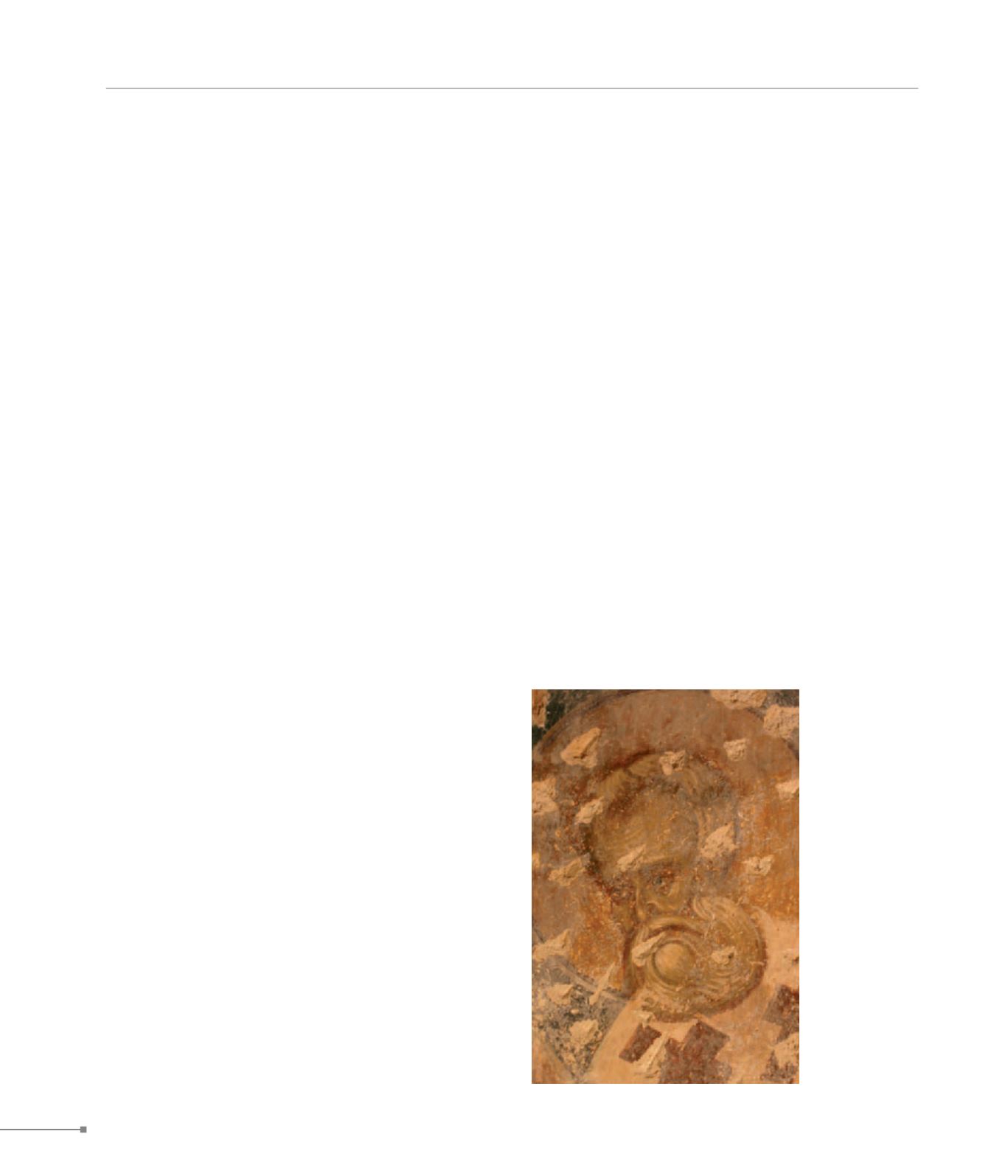
Kastri.
Kamariotis.
CRETE
268
425. Kamariotis,
Saint George,
wall painting
(Καμαριώτης,
Άγιος Γεώργιος,
τοιχογραφία)
421.
Kastri.
The fortified settlement of Ano Kastri is mentioned as the seat
of the large, Byzantine Kallergis family. Around the twin-naved
church of Panagia are the ruins of structures from the years
of Venetian rule. The church was built on the site of an earlier
church, whose apse foundations can be seen. The existing
apse, decorated with arches, displays two coats of arms of
the Kallergis family. Wall-paintings of the first half of the 14th
c. have been revealed.
422.
Aghios Mamas.
The frescoed church of Aghios Mamas has decoration of 1312
and 1321. The church of Aghia Irene was decorated in the first
half of the 15th c. The church of Panagia at Aghios Ioannis
features frescoes from the second half of the 13th c.
423.
Diskouriou Monastery.
The buildings of the monastery of Saint George were con-
structed around the aisleless catholicon, which is the oldest
structure. Near the monastery is the barrel-vaulted, single-
nave church of Saint John, with decoration of the first half of
the 14th c. Further afield, close to the monastery of the Soter
at Chalepa, built under Late Venetian rule, is found the barrel-
vaulted, single-nave church of Aghia Marina. The earlier of the
two layers of frescoes was the work of a skillful artist of the first
half of the 14th c.
424.
Axos.
The present-day village is built on the site of the ancient city
of Axos, in the foothills of Mount Psiloreitis. In some of the
early sources Axos is mentioned as a see. Beneath the ruined
church of Archangel Michael are remnants of a large apse at
the bema of an Early Christian basilica. Foundations of an
Early Christian apse and the mosaic floor of another basilica
are observable around and within the funerary church of Saint
John Prodromos, decorated since the 14th c. Other church-
es in Axos feature marble spolia from Early Byzantine plac-
es of worship. The village continued to prosper in the years
of Venetian rule, as attested by a large number of surviving
churches. The originally barrel-vaulted, single-nave church of
Aghia Irene, expanded to the W with the addition of an aisle-
less, domed narthex, dates to the mid-14th c. The ruined twin-
naved church of Aghia Paraskevi was constructed in the early
14th c. The ruined, aisleless, domed church of the Soter was
built on the site of an earlier structure with a mosaic floor. The
church of Saint George displays decoration from the first half
of the 14th c. The church of Panagia, E of the village, on the
site of an earlier building, has frescoes in two layers, the ear-
lier from the first half of the 14th c. At Anogeia is found the
twin-naved church of Saint John, whose older nave features
high-quality wall-painted decoration from the second half of
the 14th c.
425.
Kamariotis.
Kamariotis, built in the foothills of Psiloreitis from the years of
Early Venetian rule, was a focus (one of many) for the Kaller-
gis family, whose coats of arms have been repeatedly seen in
churches. Saint George was originally a three-aisled, vaulted
basilica with domed narthex. Later a wide exonarthex was
added to which leads an elaborate doorframe featuring the
Lion of Saint Mark between two Kallergis coats of arms on the
lintel. The synthronon in the central apse is a survivor, given
the fact that the church was possibly the seat of the tempo-
rary bishopric ceded by Venice to the Kallergis family with the
Treaty of 1299. Frescoes of the early 14th c. have been discov-
ered. The twin-naved church of Panagia has painted decora-
tion of the early 15th c.


